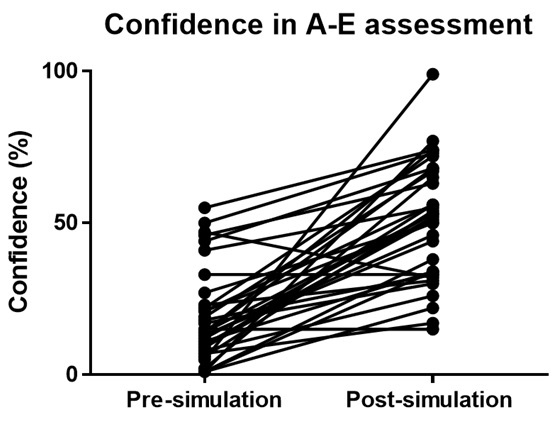


Theme
9BB Simulation 1
INSTITUTION
Barts and the the London School of Medicine and Dentistry, Queen Mary University of London - Medical Education, Whippps Cross Hospital - London - Unit

High fidelity simulation (HFS) training is used at a range of different stages throughout medical training in the UK. The evidence for its benefits as a learning experience is extensive. Many trusts use simulation for their junior doctors to teach technical and non-technical skills for their transition for their transition from medical school to foundation training. Similarly, transition from pre-clincal to clinical training can be an anxious time for students1 and also requires quick adaptation of skill sets from theoretical learning to more practical learning; and learning new technical and non-technical skills. HFS is known to increase ease the transition nursing graduates by improving non technical skills2.
The vast majority of UK medical schools now offer an integrated curriculum with some form of early clinical exposure. Many UK medical schools already utilise HFS in their curriculum. A small pilot study indicated that most HFS takes place in years 4 and 5.
We hypothesise that high fidelity simulation in the early clinical training of medical students may ease the transition and anxieties experienced by students by allowing them to develop in a risk free environment3.
35 third year medical students at a UK medical school in their first week of clinical training, with no previous experience of high fidelity simulation were selected to take part in this simulation study. Participants completed a survey assessing their confidence and anxieties relating to starting clinical training and their skill set using a sliding visual analogue scale scored 0-100%.

A whole group didactic session on A-E assessment of an unwell patient preceded small group high fidelity simulation scenarios (asthma, COPD, fall, haematemesis) using SimMan and SMOTS software. Participants then completed the same survey post-simulation.
Dr Rebecca Preedy, Dr Rebecca Young and the Medical Education Department at Whipps Cross University hospital, Barts Health Trust.
1. Hayes K, Feather A, Hall A, Sedgwick P, Wannan G, Wessier-Smith A, Green T, McCrorie P. Anxiety in medical students: is preparation for full-time clinical attachments more dependent upon differences in maturity or on educational programmes for undergraduate and graduate entry students?. Acedemic Medicine; Journal of the Association of American Medical Colleagues 2004; 38(11):1154-63 .
2. Gordon, C.J. & Buckley, T. (2009) The effect of high-fidelity simulation training on medical-surgical graduate nurses’ perceived ability to respond to patient clinical emergencies, Journal of Continuing Education in Nursing, 40(11), 491-498
3. Gordon JA, Wilkerson WM, Shaffer DW, Armstrong EG.. "Practicing" medicine without risk: students' and educators' responses to high-fidelity patient simulation. Acedemic Medicine; Journal of the Association of American Medical Colleagues 2001; 76(5): .
- Participants had significantly increased confidence related to approaching an acutely unwell patient, mean of differences 22.8% [n=35 (95% CI 15.2 – 38.5, p<0.0001)].
- It was felt that the simulation itself played a specific role in reducing anxieties compared to pre-simulation perceptions, mean difference 11.63% agreement [n=35 (95% CI 4.35-18.9, p=0.0026)].
- Simulation had a role in easing the transition from pre-clinical to clinical training, mean increase in agreement 7.90% [n=35 (95%CI 1.32-14.50, p=0.02)] after simulation.
- Confidence in A-E assessment significantly increased by mean difference of 31.86% [n=35 (95% CI 24.23-39.48 p<0.0001). Whilst failing to reduce participants overall anxieties about starting clinical training, 17/32 (51.5%) had a positive learning experience, 14/32 (43.8%) rated their learning experience as very positive and only 3/32 (9.40%) rated their experience as neutral; no negative results were recorded.

- Follow up of 12 participants at 8 weeks showed that confidence approaching an acutely unwell patient was 45.0%, 8/12 agreed that simulation improved their confidence. 9/12 preferred simulation style of learning to lectures.

Simulation can be a highly useful learning experience for students early on in their clinical training.
It may allow students to better cope with high pressure situations on encountered on wards or whilst shadowing on-call doctors.
It also is an effective method of teaching and learning specific skills and attitudes.
High fidelity simulation is a useful tool in early clinical training for increasing student confidence in specific scenarios.
 Send Email
Send Email